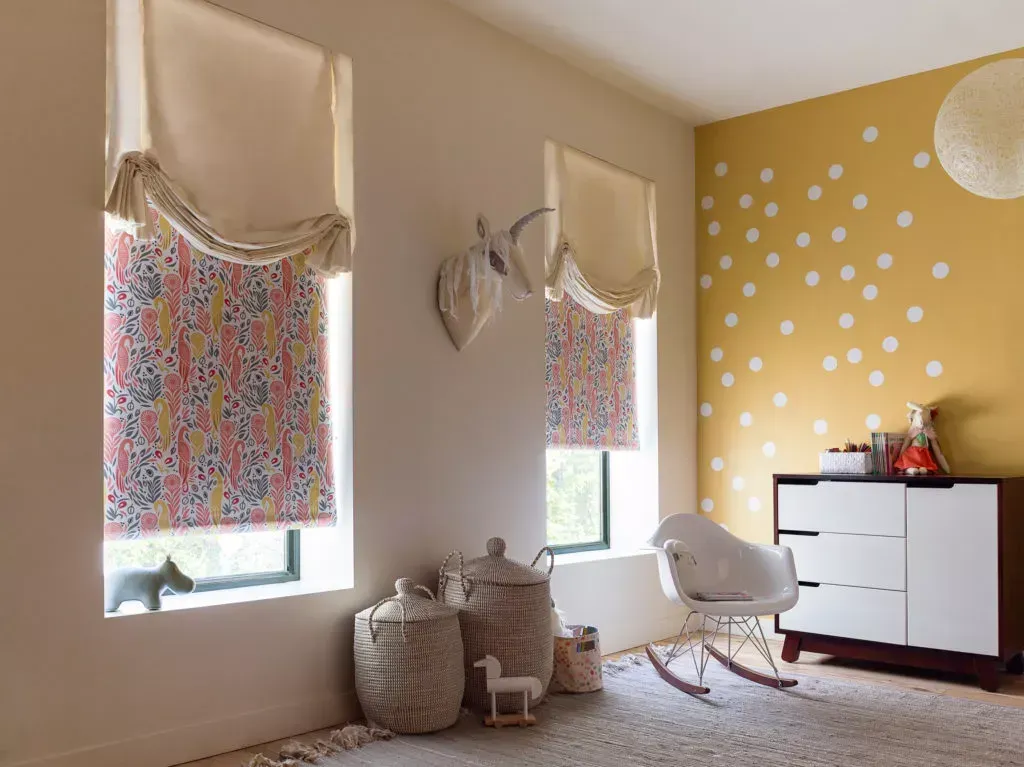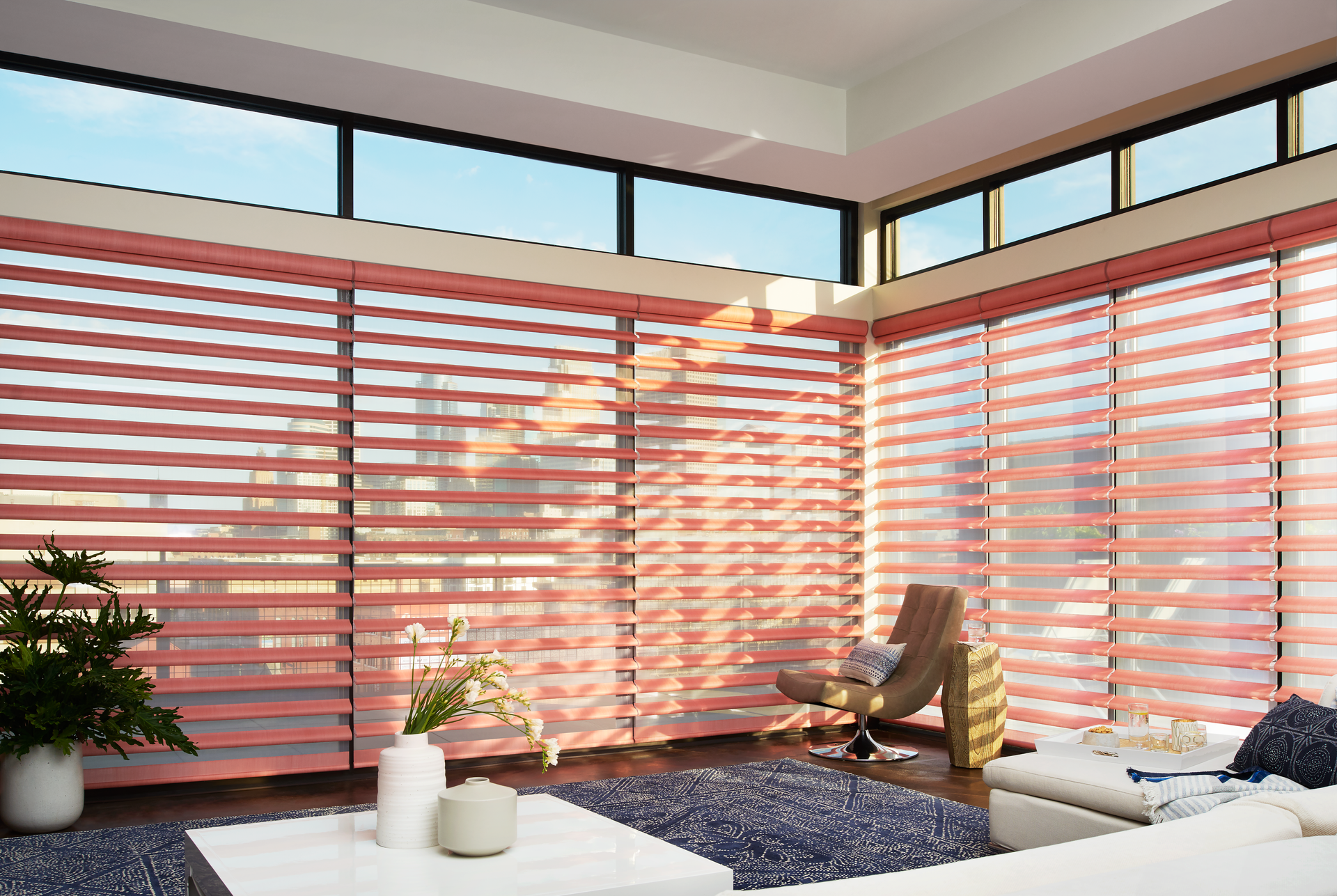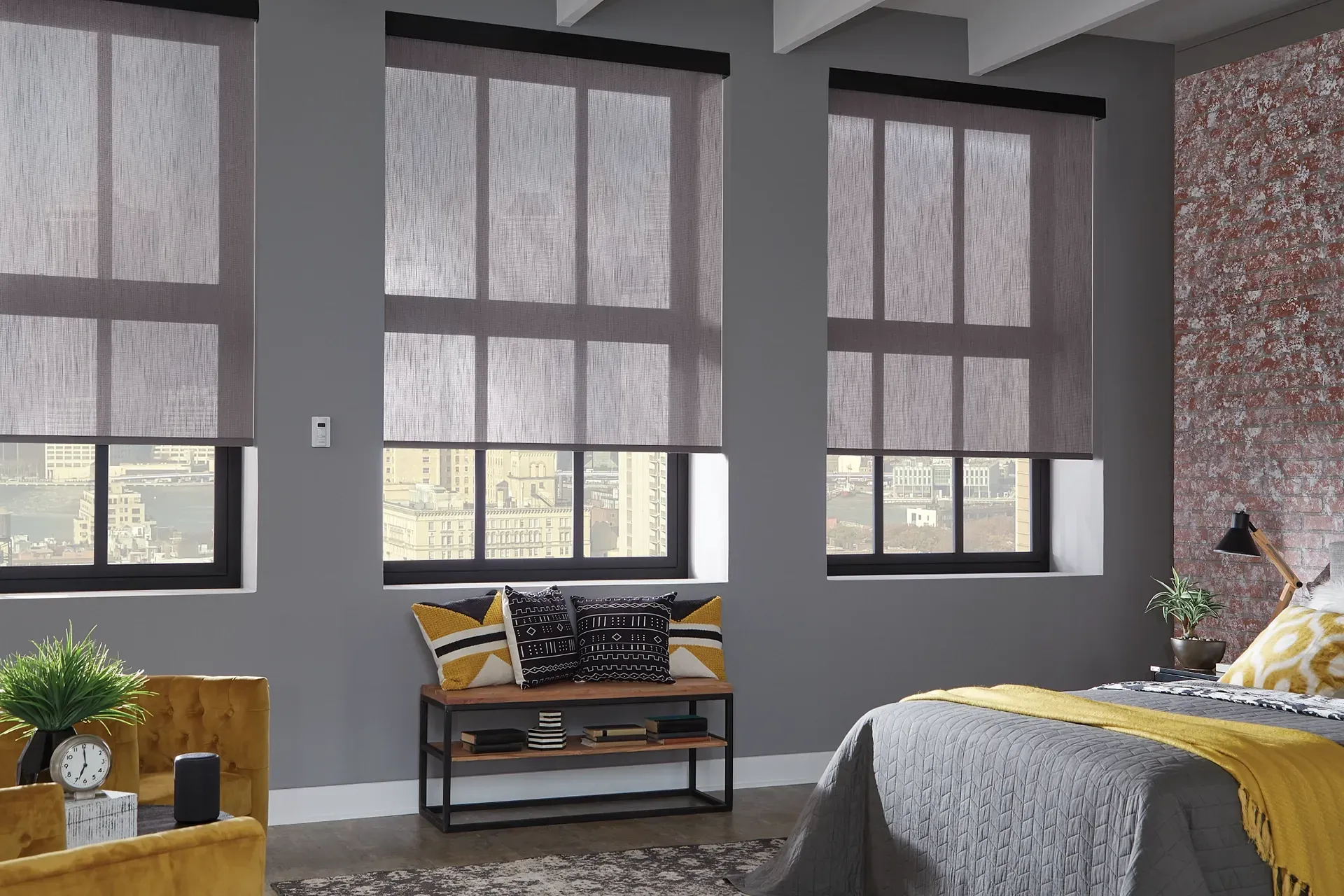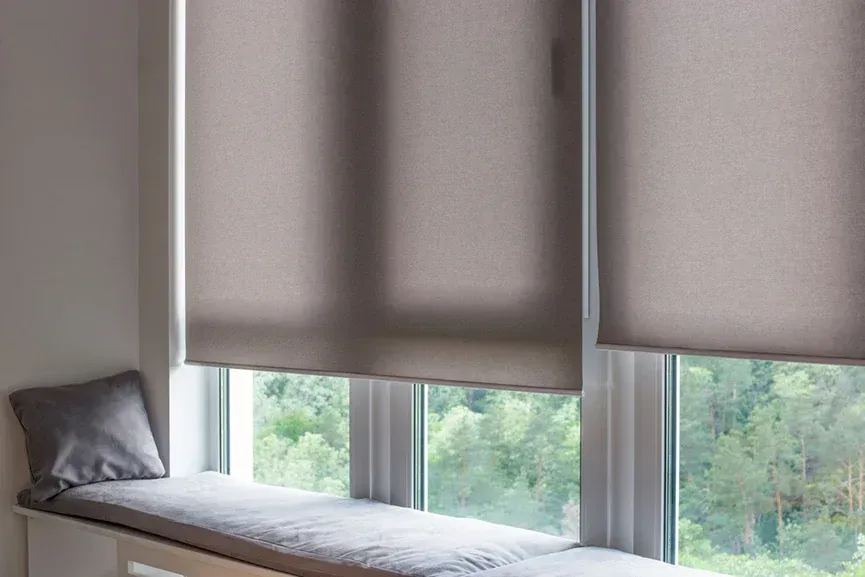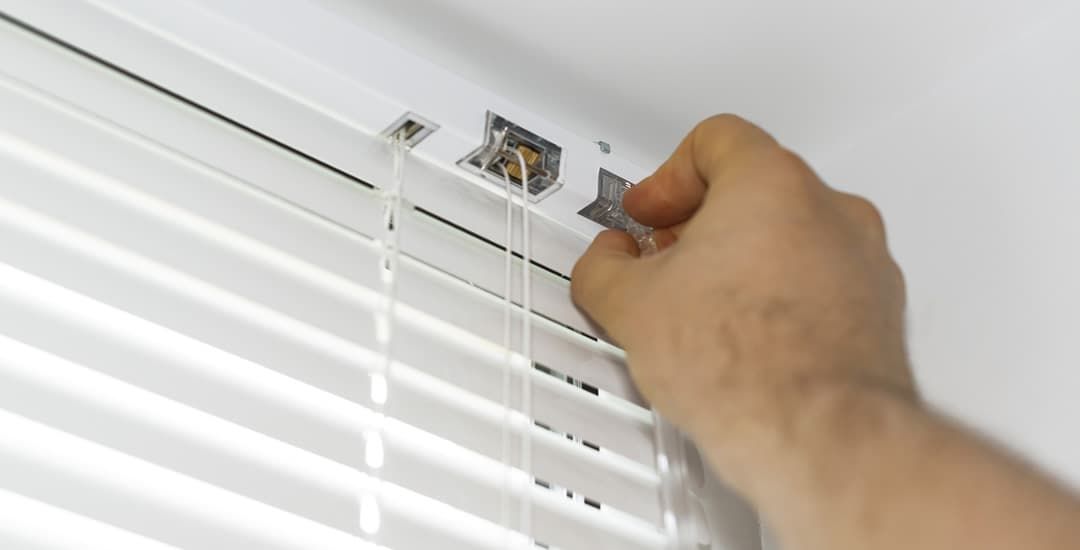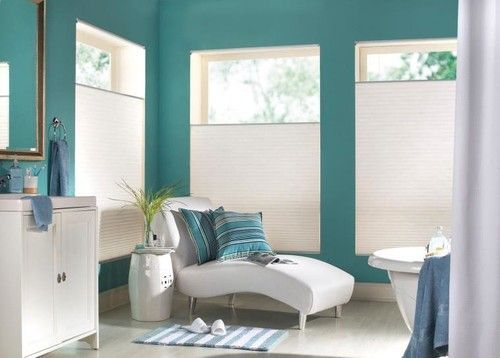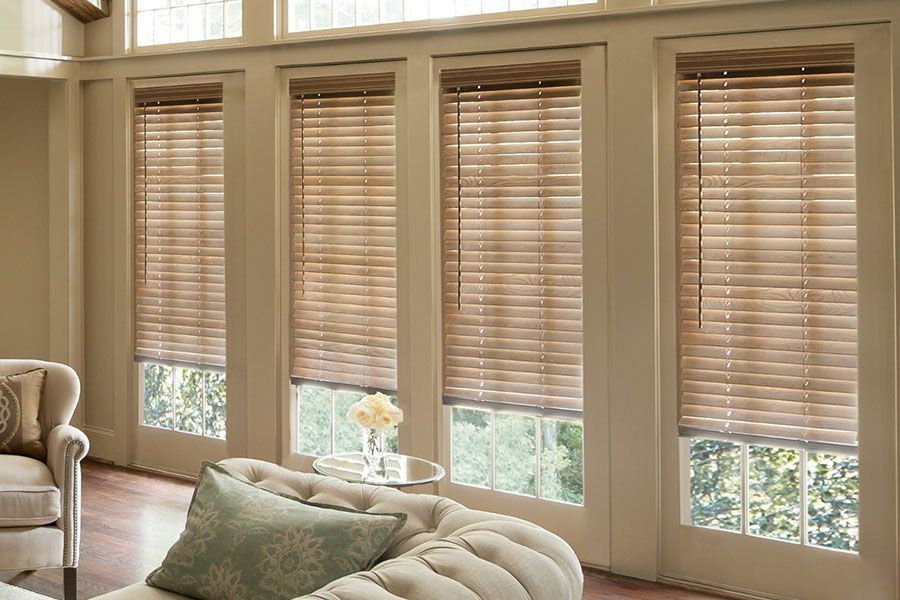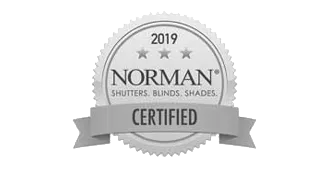LOVE IS BLINDS
Can Window Blinds and Shades Improve Indoor Air Quality? What Missouri Homeowners Should Know
TLDR;
Yes, window blinds and shades improve indoor air quality when you choose the right materials and maintain them properly. They reduce dust buildup, limit allergens, control moisture, and prevent mold while supporting better airflow and insulation. Selecting low-VOC, easy-to-clean options and keeping them maintained ensures healthier air inside your home.
Why Indoor Air Quality Matters
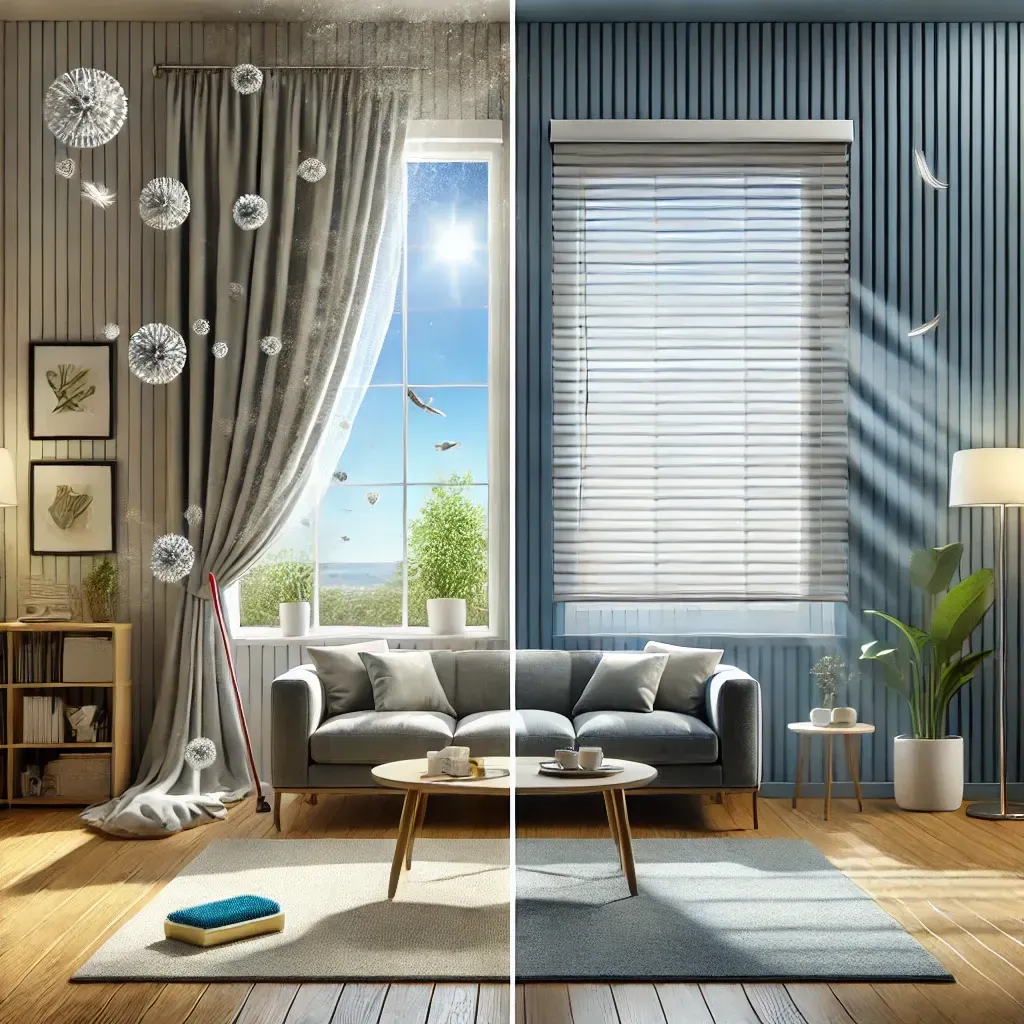
Indoor air quality, also called IAQ, affects your health every day. Dust, allergens, mold spores, and chemical emissions build up inside homes. In Missouri, humidity makes air quality worse during hot summers, while sealed homes in winter trap pollutants inside. Poor IAQ leads to respiratory problems, allergies, and discomfort.
Windows are a major factor in IAQ. They let light and air in, but they also allow allergens and pollutants to enter.
Window treatments act as barriers and filters, shaping how much dust, pollen, and moisture stay inside.
Dust and Allergen Control With Blinds and Shades
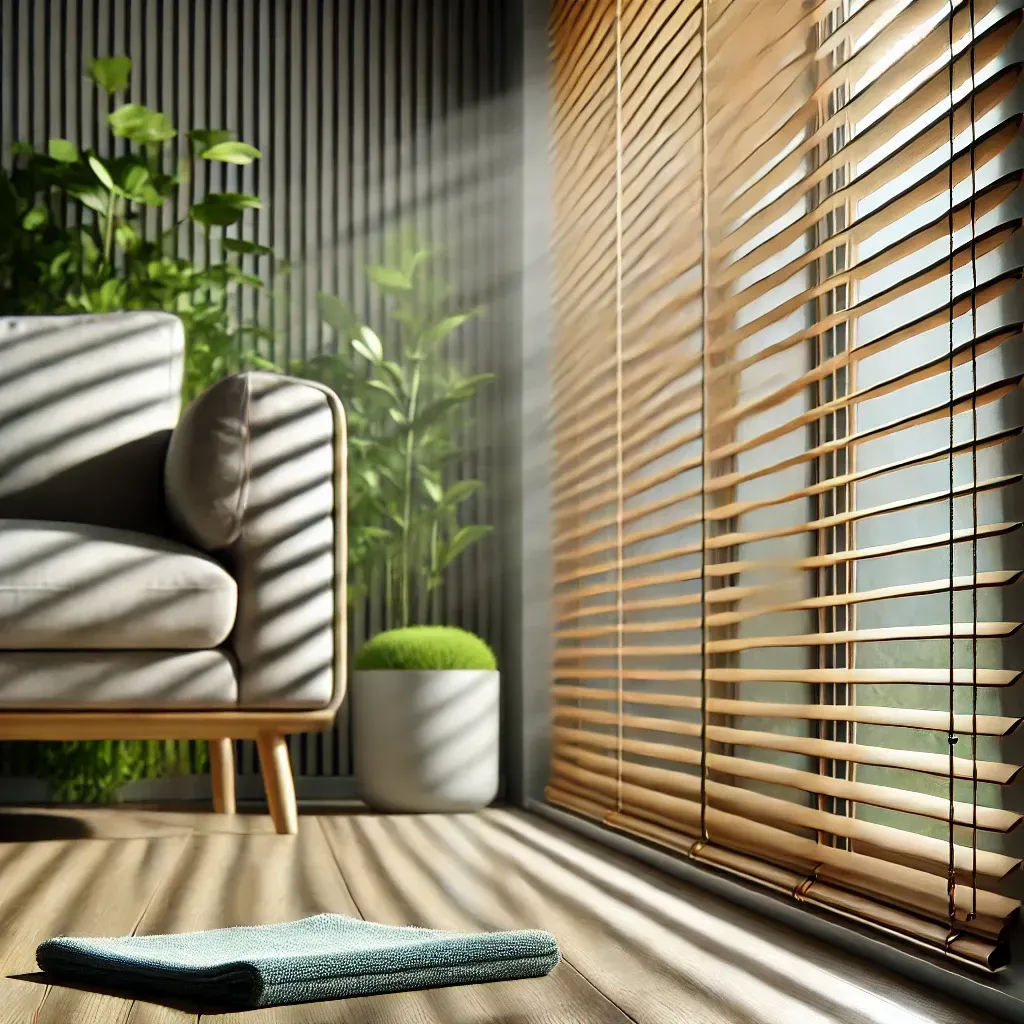
Blinds and shades help reduce dust accumulation compared to heavy curtains. Curtains often trap fibers, pet dander, and pollen. Smooth surfaces like vinyl, faux wood, and aluminum blinds are easier to wipe clean. For homeowners considering vertical blinds, fabric choice makes a big difference. The best fabric for vertical blinds balances durability, easy cleaning, and reduced dust buildup.
- Hard-surface blinds collect less dust than fabric curtains
- Cellular and roller shades trap fewer allergens when cleaned on schedule
- Hypoallergenic materials improve IAQ for asthma or allergy sufferers
Routine cleaning is important. A weekly dusting or vacuuming with a brush attachment prevents allergens from spreading. In homes with pets, more frequent cleaning helps maintain clean air.
VOCs and Off-Gassing From Window Treatments

Indoor air quality is affected by VOCs, or volatile organic compounds. These chemicals are released from some building materials, paints, and furniture. Certain window treatments also release VOCs if made with synthetic materials or poor finishes.
Choosing certified low-VOC products matters. Look for:
- GREENGUARD-certified blinds and shades
- OEKO-TEX certified fabrics
- Natural fibers like cotton or linen that use safe finishes
- Aluminum or bamboo, which do not release harmful gases
Avoid untreated plastics or adhesives that release VOCs into the air.
Shop Love Is Blinds recommends certified products to ensure your home stays safe.
Preventing Mold and Mildew in Humid Climates
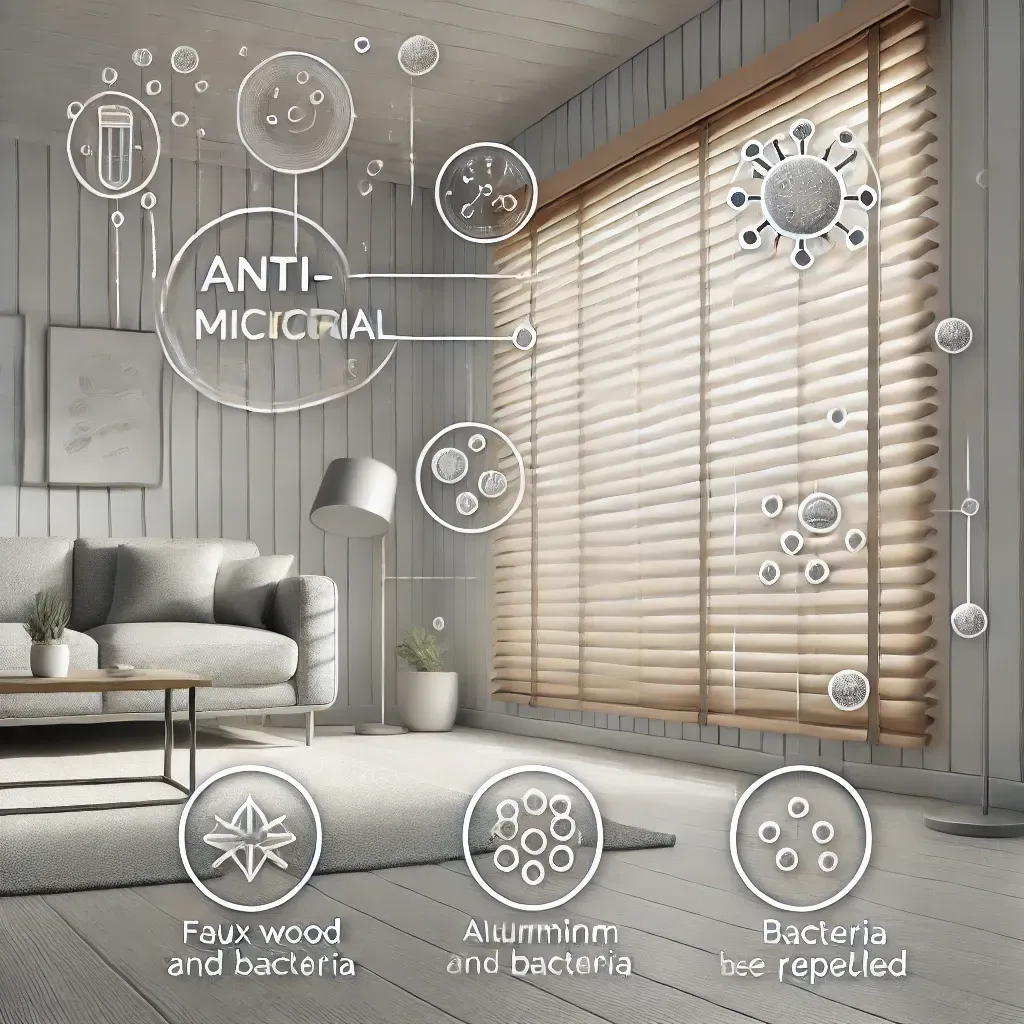
Missouri’s humid summers increase the risk of mold. Moisture trapped on fabric or untreated wood window treatments creates a breeding ground for mold and mildew. These irritants affect breathing and worsen allergies.
Safer options include:
- Faux wood blinds that resist warping and moisture
- Aluminum blinds that do not absorb humidity
- Cellular shades with moisture-resistant coatings
Avoid fabric treatments in high-humidity rooms like kitchens and bathrooms. Regular ventilation, combined with moisture-resistant blinds or shades, keeps air fresh. In areas like Missouri where humidity swings are common,
choosing weather-resistant blinds ensures your treatments stay effective year-round without warping or trapping moisture.
How Light and Heat Affect Indoor Air Quality
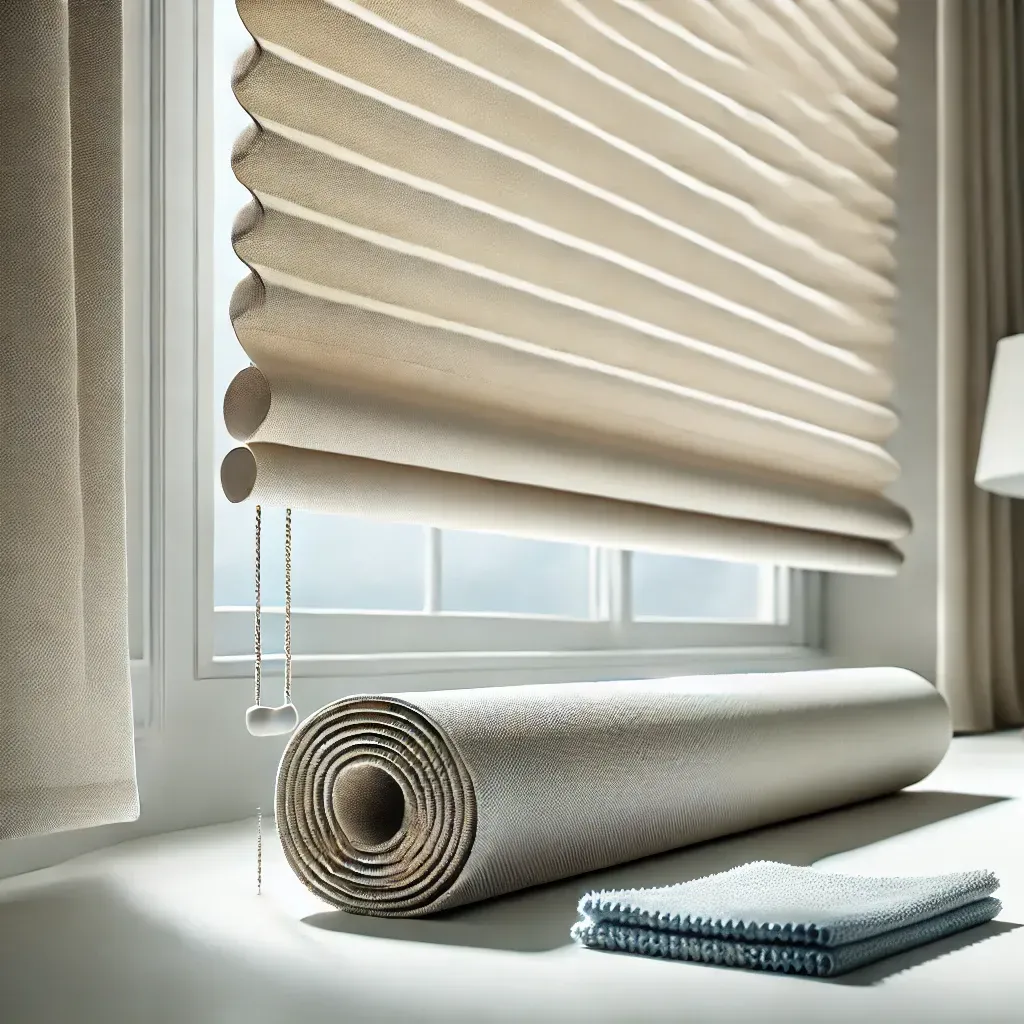
Sunlight and heat accelerate VOC emissions from building materials. UV rays also break down fabrics and wood, releasing particles into the air.
Blinds and shades protect against this by:
- Blocking UV rays that trigger off-gassing
- Regulating indoor temperature to reduce heat stress
- Lowering the chance of pollutants becoming airborne
For Missouri homes, cellular shades with UV-blocking features balance light and heat control with better air safety.
Energy Efficiency and Ventilation Benefits
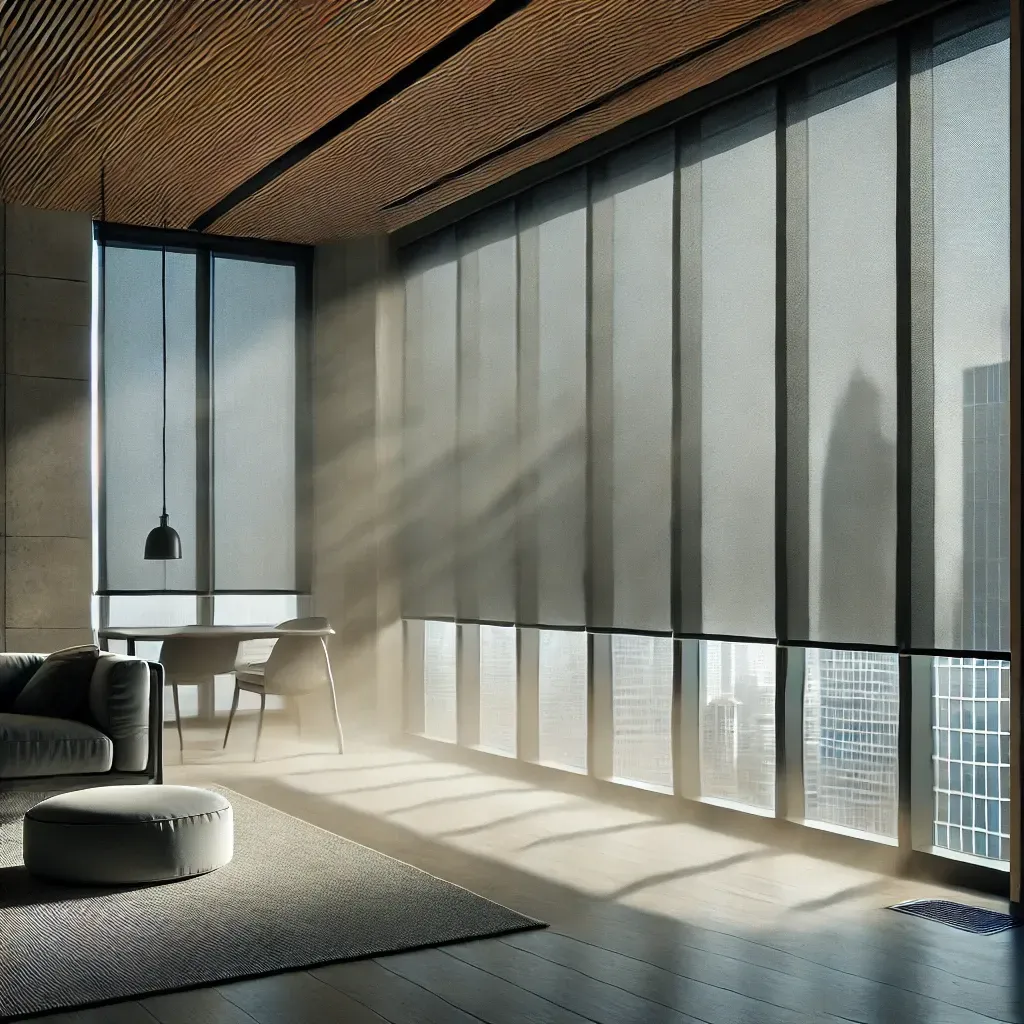
Energy loss through windows influences IAQ. Drafty windows allow outdoor allergens to enter. Poor insulation forces HVAC systems to work harder, circulating dust.
Blinds and shades improve energy efficiency while supporting ventilation:
- Cellular shades trap air, improving insulation
- Roller shades reduce drafts when fitted correctly
- Adjustable blinds allow airflow without full exposure to outdoor allergens
Energy-efficient window treatments lower HVAC strain, reducing indoor dust movement.
What to Look For in Healthy Window Treatments
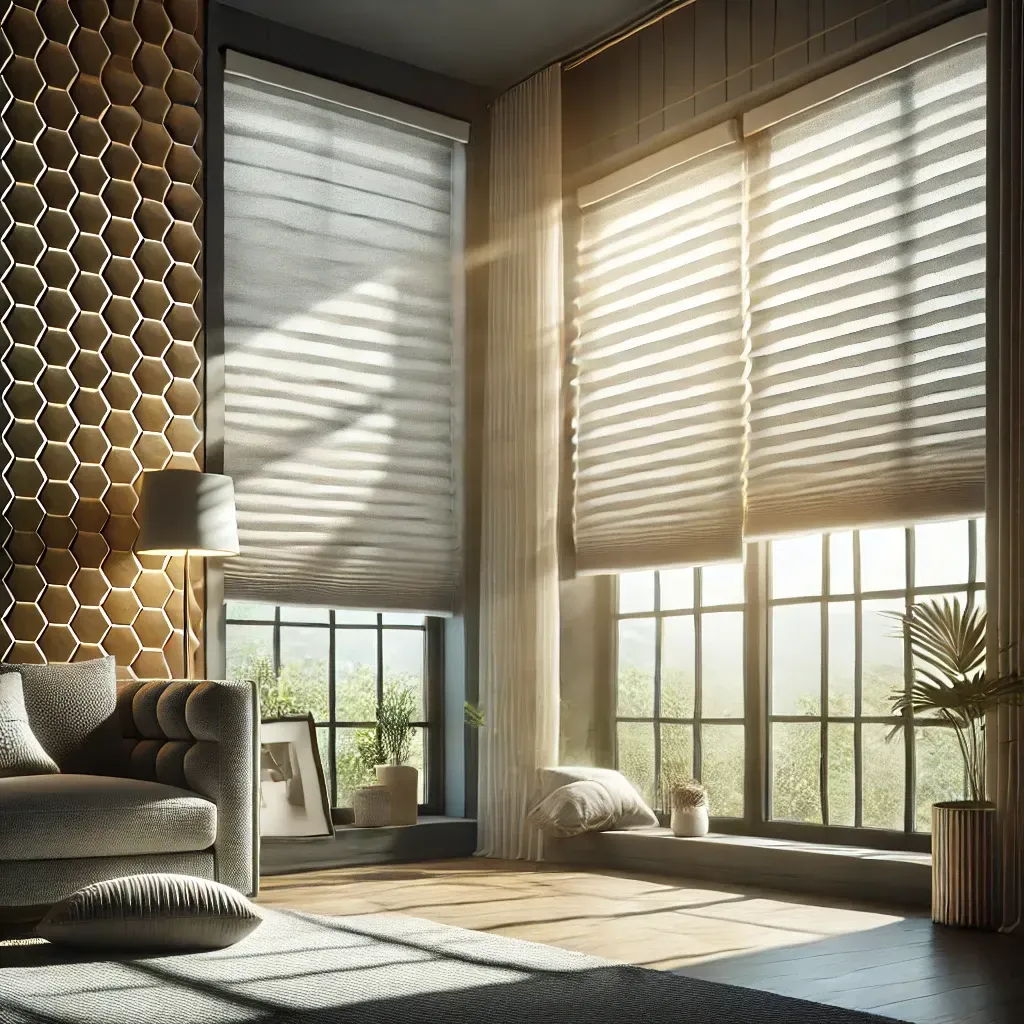
When selecting blinds and shades for air quality, focus on the following:
- Material: Low-VOC fabrics, natural fibers, faux wood, or aluminum
- Certifications: GREENGUARD, OEKO-TEX, or similar air-quality certifications
- Design: Cellular or honeycomb for insulation, roller for easy cleaning
- Functionality: Cordless and motorized options reduce dust-collecting surfaces and improve safety
- Maintenance: Smooth finishes that wipe clean with minimal effort
Shop Love Is Blinds offers products that meet these criteria and guide you toward healthier choices.
Maintenance Practices for Missouri Homes

Even the best blinds and shades lose effectiveness if not maintained. Maintenance directly impacts IAQ.
- Dust or vacuum blinds weekly
- Wipe slats with microfiber cloths
- Wash removable fabric shades with safe, non-toxic cleaners
- Deep clean during high pollen seasons in Missouri
- Replace blinds or shades showing signs of mold or damage
Seasonal care matters. In summer, prevent condensation on windows. In winter, ensure treatments are dry and intact to avoid mold growth.
Balancing Cost With Health and Performance
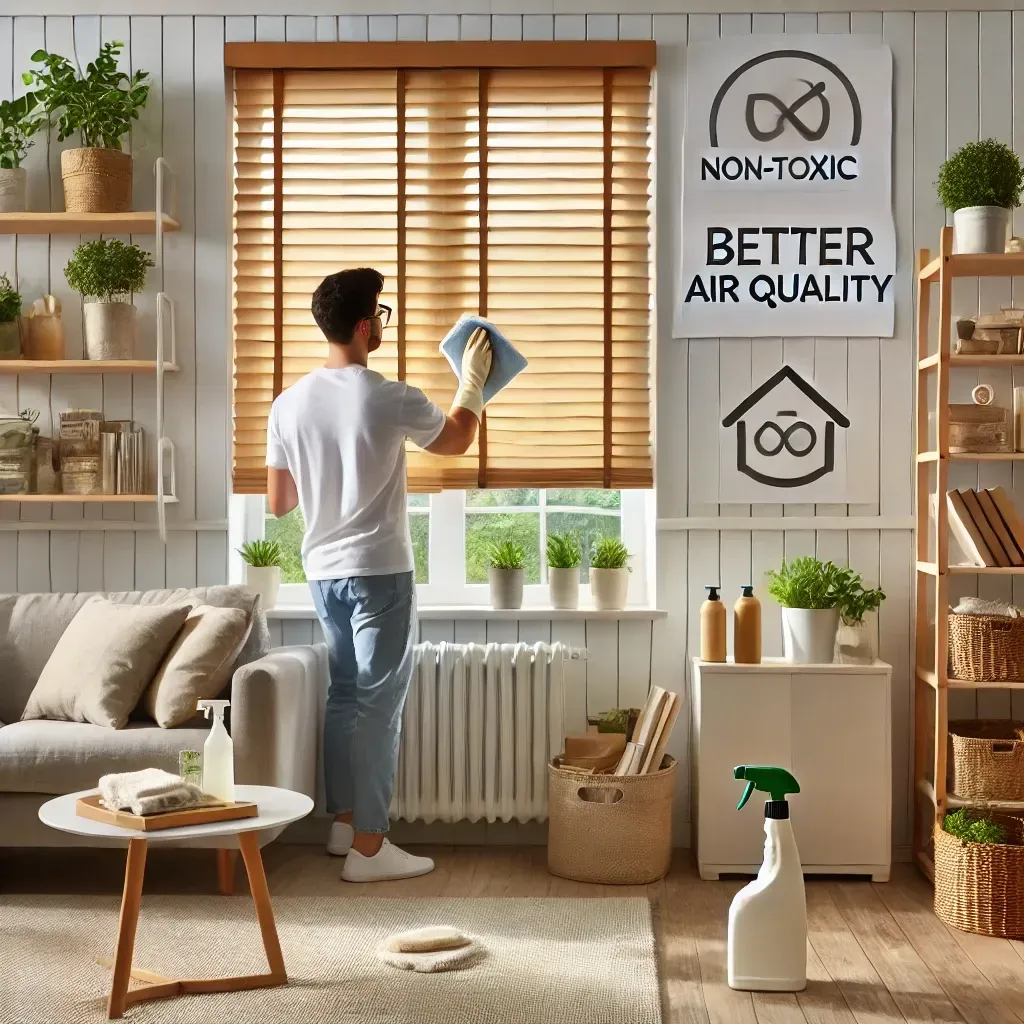
Choosing healthy window treatments is an investment. While the upfront price may be higher for certified, low-VOC, or motorized products, the benefits extend long term.
- Better air quality reduces allergy symptoms
- Energy savings from insulation lower utility bills
- Durable materials extend replacement cycles
- Reduced medical costs linked to respiratory issues
A practical choice balances affordability with proven health benefits. If budget is a concern, you can also explore
window shades alternatives that provide similar insulation and air quality benefits at a lower price point.”
Local Considerations for Missouri Homes
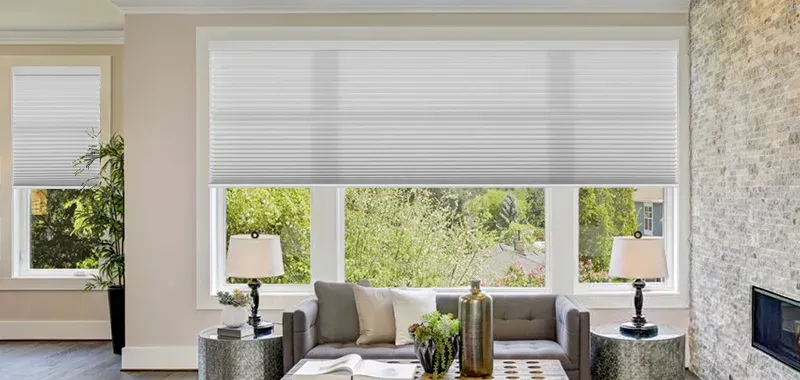
Missouri’s environment makes air quality management critical.
- Humidity: Summer moisture increases mold risks
- Seasonal pollen: Spring and fall bring high allergen levels
- Temperature swings: Hot summers and cold winters stress windows and treatments
- Building codes: Some local builders emphasize low-VOC products
Homeowners should prioritize moisture-resistant and certified blinds or shades to address these regional challenges.
Common Questions About Indoor Air Quality and Window Treatments
Do blinds and shades filter pollutants or only reduce them?
They reduce accumulation but do not filter air. For full protection, pair them with air purifiers and ventilation systems.
Are blinds or shades better for allergies?
Blinds made of smooth materials are easier to clean. Cellular shades resist dust buildup when maintained correctly.
How often should window treatments be replaced?
Most blinds and shades last several years, but replace them if you see mold, warping, or wear that affects air quality.
Are motorized blinds healthier?
Motorized blinds collect less dust due to fewer cords and moving parts. They also make regular cleaning easier.
Can window treatments work with other IAQ solutions?
Yes. Pair them with HEPA filters, controlled ventilation, and dehumidifiers for complete air management.
Practical Steps for Healthier Air With Shop Love Is Blinds
To improve your home’s IAQ using blinds and shades:
- Inspect current window treatments for mold, dust, or damage
- Replace outdated curtains with low-VOC blinds or shades
- Clean treatments on a schedule, especially in high-pollen months
- Choose certified products that align with Missouri’s climate challenges
- Combine with ventilation, filtration, and regular home maintenance
Healthy air begins with informed choices. Shop Love Is Blinds helps you choose treatments that protect your family’s health while enhancing your home’s comfort.
Need to setup a Repair Appointment?




